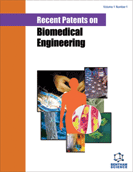Abstract
Recent progress in breast imaging has led to new, improved techniques. Mammography is one of the most widely used breast cancer diagnosis technique as it allows visualization of breast lumps and calcifications before they are palpable. Nonetheless, it has some limitations, including structural overlap, because a mammogram is a 2D image of a 3D structure. Techniques based on 3D-reconstruction of breast images, such as digital breast tomosynthesis (DBT), are of great importance. DBT solves many tissue overlapping problems, which are a major source of recalls, and improves structure visualization through combination with mammography exams. Currently, DBT devices that have been patented use an X-Ray tube moving along an arc in order to capture a plurality of radiographic projections of the subject at different angle. Recently, parallel imaging configurations for breast tomosynthesis began to appear too. Techniques using multiple X-Ray anodes and/or cathodes are being developed so that mechanical instability can be greatly reduced. Despite its advantages, some considerations in the design of DBT systems are required. Such as the need to find better approaches regarding systems with less image blurring, lower acquisition times, lower patient dose and invulnerability to motion of the X-Ray source during acquisition.
Keywords: 3D, Angle, Breast, Cancer, Diagnosis, Digital, Dose, Imaging, Mammography, Patent, Projections, Radiation, Shifting and Adding, Structure Overlapping, Tomosynthesis, X-Ray.
 5
5

